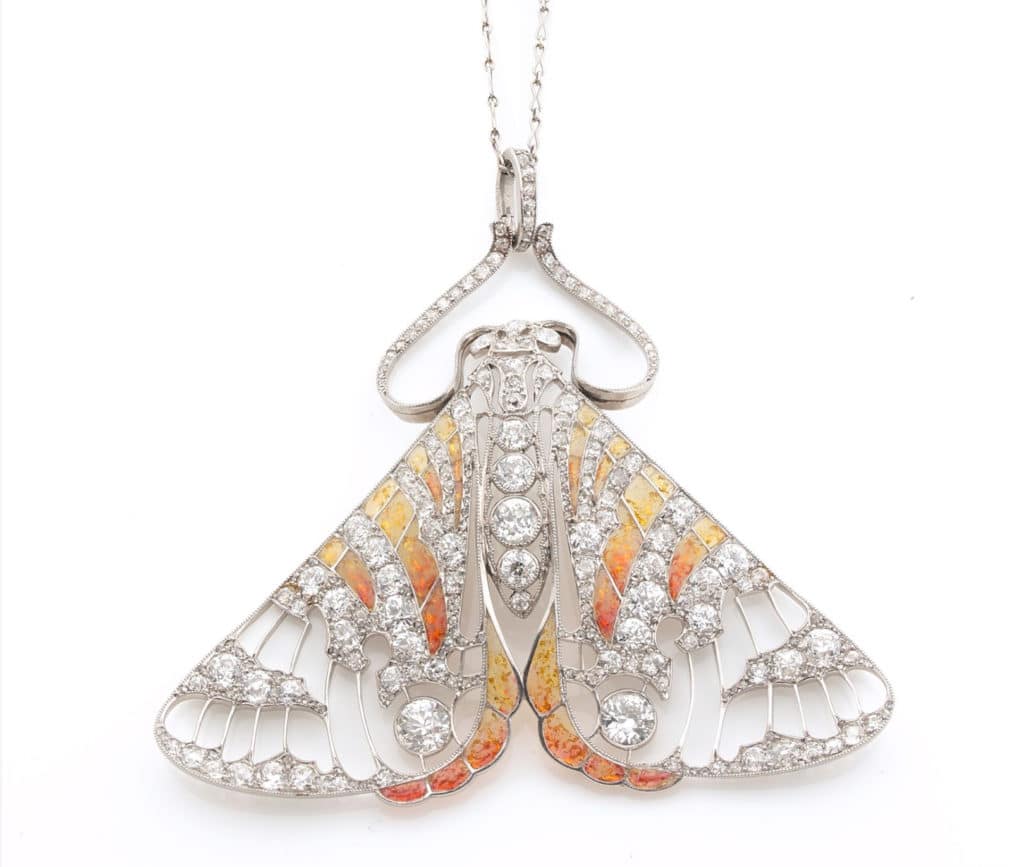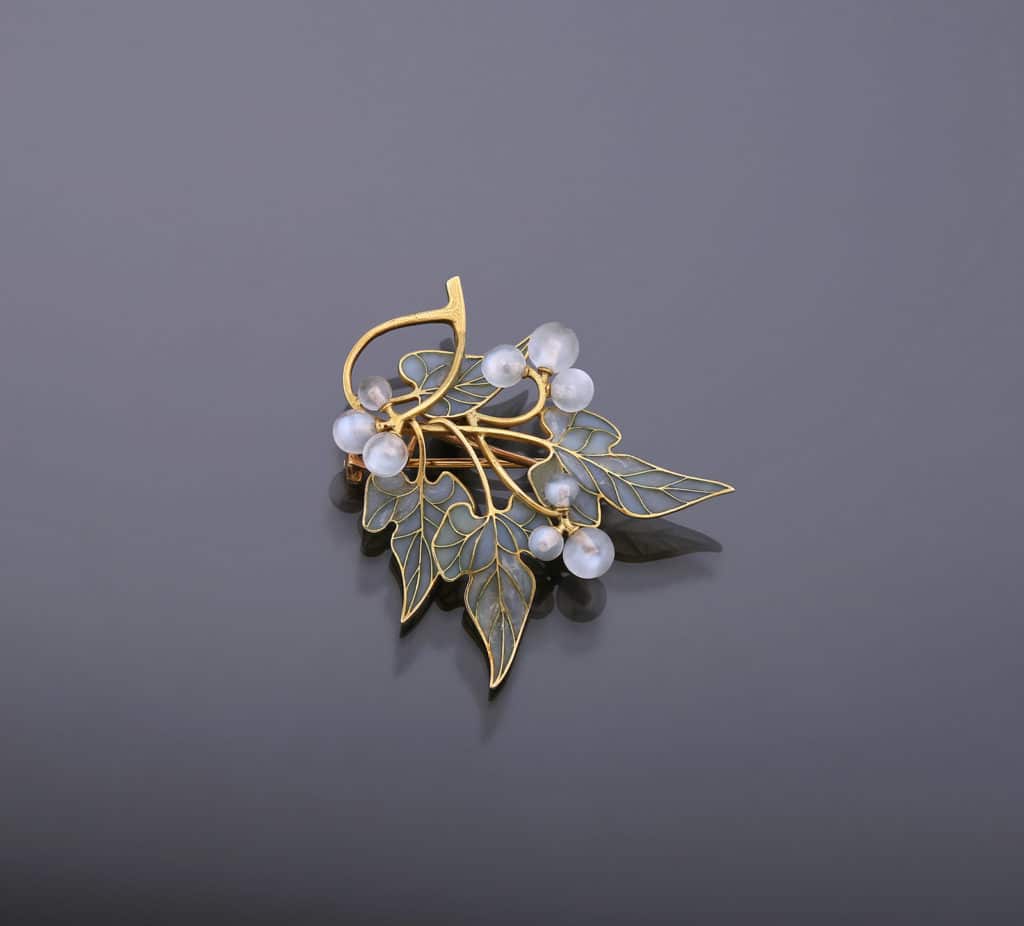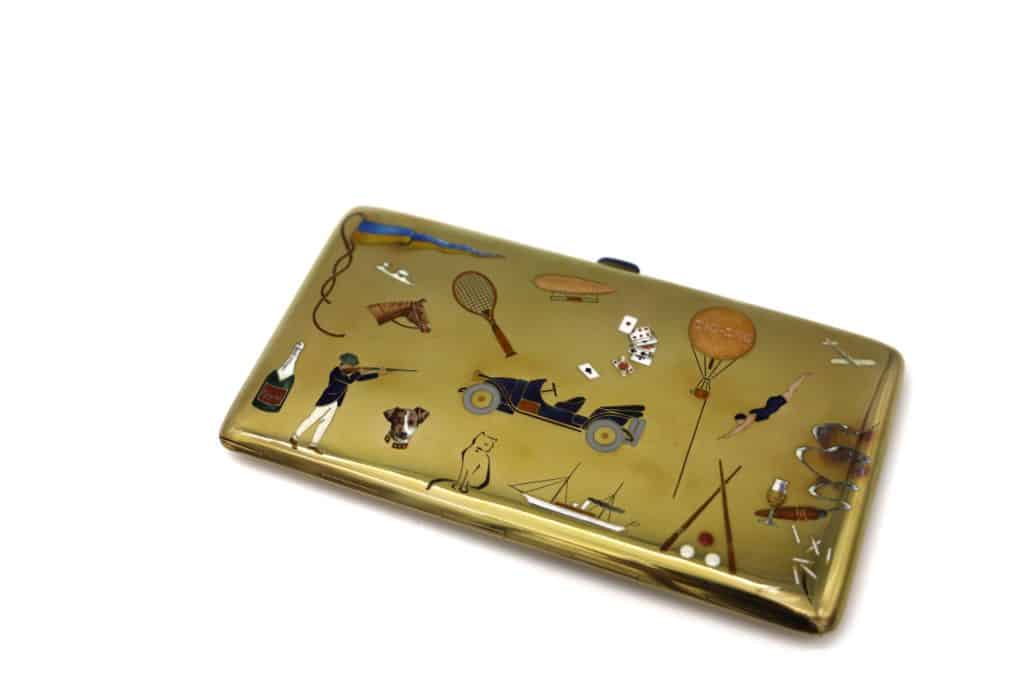Relaunched in 2021 by the seventh generation, Camille and Damien Vever, forty years after its closing down, the Maison Vever is celebrating its history with an exhibition at 9 rue de la Paix in Paris. Around fifty pieces of jewelry and numerous personal objects reveal the story of a family and of a man – Henri Vever – who made his house one of the most beautiful of the early 20th century. A must-see until 7 July 2023.
Vever, from Metz to Paris
In 1820-1821, Vever was founded in Metz, Moselle. Pierre-Paul, aged 26, had just opened his jewellery shop at 24 Place Saint-Jacques. He applied for the hallmark on 14 September 1820, declaring that he “intended to sell gold and silver articles and would abide by the regulations governing the profession”, as recorded in the register of gold and silver articles kept at the Metz Municipal Archives.
A first hallmark with the initials PV was thus created. We still do not know how this son of a master roaster, orphaned first by his father and then by his mother and raised by his sister, came to be trained as a goldsmith. Whatever the case, he quickly built up a fine clientele from Luxembourg and the Rhineland.
Ernest, his son, joined the company in 1848 and continued the work begun by his father. The company even won its first major prize at the 1861 Universal Exhibition. At the time, the company’s clientele consisted mainly of wealthy people from the border region, but it also did a lot of work for the clergy and the army. But the situation in eastern France remained fragile, and relations with Germany were not always easy. Following France’s defeat by Germany, Lorraine was annexed by its neighbour in 1871 with the signing of the Treaty of Frankfurt.
The patriotic Vever family decided to leave Metz and move to Paris, buying out the business of Marret & Baugrand (sometimes spelt Beaugrand), which supplied the Emperor Napoleon III and was based at 19 rue de la Paix. In 1875, Ernest Vever was appointed president of the Chambre syndicale de bijouterie, joaillerie, orfèvrerie. From then on, the history of the company was written in Paris. It will never return to its roots in Metz.

Henri Vever, the Maison leading figure
in 1881, Ernest’s sons Paul and Henri took over the company, helping to increase its influence and reputation. The exhibition is a real opportunity to discover the extraordinary personality of this immense artist, trained as a painter, writer and great traveller, who was to bring the family business the fame it is today.
Although he wrote daily, he was passionate about the history of his time and his profession. His Histoire de la bijouterie au XIXe siècle is considered to be the Bible of the trade because of the wealth of information it contains. If you want to understand how the trade was organised, this book is a must.

A compulsive collector, he amassed an incalculable number of objects. He collected jewelry dating from the Revolution to 1900 and donated it in 1924 to the MAD, then the Musée des Arts Décoratifs. On this occasion, he bequeathed almost 60 pieces of jewelry signed Vever. He not only painted, but also collected the greatest masters: Sisley, Renoir, Pissaro, Monet and Degas were among the names that made up his collection. The exhibition features the catalogue from the sale of his collection in 1897.
And finally, he travelled. The French exhibition in Moscow in 1891 was the perfect opportunity to discover Europe. Camille Vever was able to reconstruct his trip thanks to Henri’s notebooks, in which he transcribed his daily discoveries. Over the course of two months, he discovered Berlin, Copenhagen, Baku, Constantinople and Samarkand. A collection dedicated to Islamic art will be the perfect reflection of this.

A frequent visitor to high society and Paris, he was fascinated by the Art Nouveau movement and came up with creations that would go down in the company’s history as well as in the history of jewelry. He broke away from traditional materials, incorporating horn and ivory into his pieces, and was curious about new techniques, participating in the development of plique-à-jour enamel in jewelry.
A certain René Lalique even designed for him, but it was Eugène Grasset who designed most of the pieces exhibited at the 1900 Universal Exhibition. At the same exhibition, their stands were just a few metres apart.
Around fifty pieces from private collections and a number of institutions give an insight into the diversity of the company’s creations, and show how the genius of one man and his remarkable collaborations with the great names of the day (Grasset, Tourette, Gautrait, Rouzet and Chadel) brought a small jeweller’s shop in Metz to its highest level.
The turn of the 20th century was the heyday of the Vever company, which struggled to adapt to new artistic trends after the 1914 war. Vever failed to win any prizes at the 1925 Universal Exhibition. The company went into decline and closed its doors in 1982. It was reborn forty years later by Camille and Damien Vever, descendants of Henri Vever’s brother Paul.

See you soon!







